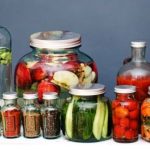What are Consumer packaged goods?
Consumer Packaged Goods (CPG) refer to a category of goods that are consumed on a daily basis by the average consumer. These goods are often sold in retail stores and come in standard packaging, which makes them easy to identify, purchase and use. Examples of CPGs include food and beverages, personal care products, cleaning supplies, and other household items.
CPG companies are those businesses that produce and market these types of products. They often have large-scale manufacturing operations and rely on efficient food distribution networks to get their products to retailers and ultimately to consumers. CPG companies also invest heavily in branding and marketing to build awareness and loyalty for their products among consumers.
Some of the largest CPG companies in the world include P&G, Unilever, Coca-Cola, Nestle and PepsiCo. These companies have a significant impact on the global economy and employ millions of people worldwide.
Also Read: Bottled And Jarred Packaged Goods- Types, Pros And Cons
Why are Consumer Packaged Goods so Important?
Consumer Packaged Goods (CPG) are important for several reasons:
-
Essential for Daily Living: CPGs are goods that are used by consumers on a daily basis, such as food and beverages, personal care products, cleaning supplies, and other household items. They are essential for daily living and meeting basic needs.
-
Drive Economic Growth: CPGs play a significant role in driving economic growth. CPG companies employ millions of people worldwide and contribute to the global economy by producing and distributing their products.
-
Innovation: CPG companies invest heavily in research and development to create new and innovative products that meet consumer needs and wants. This innovation can lead to new markets and increased revenue for companies.
-
Branding and Marketing: CPG companies rely heavily on branding and marketing to differentiate their products from competitors and build brand loyalty among consumers. This branding and marketing can lead to increased sales and profitability.
-
Sustainability: As consumers become more environmentally conscious, CPG companies are increasingly focusing on creating sustainable products and packaging. This focus on sustainability is important for the long-term health of the planet and the future of the industry.
Overall, CPGs are an essential part of daily life and play a significant role in the global economy. They drive innovation, support employment, and contribute to the well-being of consumers around the world.
Also Read: How to Navigate to the closest grocery Store for your Shopping Trip
What are the different types of Consumer Packaged Goods?
There are several different types of Consumer Packaged Goods (CPG), including:
-
Food and Beverage: This includes products such as packaged foods, snacks, beverages, and alcoholic beverages.
-
Personal Care: This includes products such as soap, shampoo, deodorant, makeup, and other personal care products.
-
Household Products: This includes products such as cleaning supplies, laundry detergent, and other household items.
-
Pet Products: This includes products such as pet food, treats, toys, and other pet-related items.
-
Health and Wellness: This includes products such as vitamins, supplements, and over-the-counter medications.
-
Baby and Child Care: This includes products such as diapers, baby food, and other child care items.
The diversity of products within the CPG industry reflects the wide range of consumer needs and preferences.
Also Read: What Are Tubed Packaged Goods- Types, Advantages & Use Cases?
What are some benefits of using consumer packaged goods?
There are several benefits of using Consumer Packaged Goods (CPG):
-
Convenience: CPGs are designed to be convenient for consumers to use. They come in pre-packaged, pre-measured portions, making it easy for consumers to use the product without having to do any additional preparation.
-
Time-saving: CPGs save time for consumers who might otherwise have to spend time preparing or measuring out ingredients. This is particularly true for products like pre-packaged meals or snacks.
-
Consistency: CPGs are designed to be consistent in terms of taste, texture, and quality. This means that consumers can rely on the product to deliver the same experience each time they use it.
-
Safety and Health: CPGs are often tested, and regulated for safety and health concerns. For example, food products are tested for bacterial contamination, and personal care products are tested for potentially harmful ingredients.
-
Availability: CPGs are widely available in grocery stores, pharmacies, and other retail outlets, making them easy for consumers to find and purchase.
-
Branding: CPGs are often branded, which can create a sense of trust and familiarity for consumers. This branding can also help to differentiate products from competitors and build loyalty among consumers.
Overall, using CPGs can make daily tasks and routines more convenient and consistent, while also providing peace of mind in terms of safety and health concerns.
Also Read: What are Boxed Packaged Goods and How to Store them Properly?
How is consumer packaging used to sell a product?
Consumer packaging is an essential element in selling a product, as it plays a crucial role in attracting and influencing consumer purchasing decisions. Here are some ways in which consumer packaging is used to sell a product:
-
Product Differentiation: Consumer packaging helps to differentiate products from competitors on the shelf. Unique packaging designs, color schemes, and branding elements can make a product stand out and catch the consumer’s eye.
-
Brand Recognition: Consumer packaging can help build brand recognition and loyalty among consumers. A well-designed and recognizable packaging can help consumers easily identify a particular brand and make it more likely for them to choose that brand over competitors.
-
Product Information: Consumer packaging provides vital product information, such as product features, benefits, ingredients, and nutritional value. This information can influence purchasing decisions and help consumers make informed choices.
-
Emotional Appeal: Consumer packaging can evoke emotions and create a connection with consumers. Packaging designs that are visually appealing, aesthetically pleasing, and have a particular theme or message can create an emotional bond with the consumer and make them more likely to choose that product.
-
Convenience: Consumer packaging can make products more convenient for consumers to use and store. Packaging that is easy to open, close, and reseal can enhance the user experience and increase the likelihood of repeat purchases.
In summary, consumer packaging is a crucial element in marketing and selling a product. It is a powerful tool that can differentiate a product from competitors, build brand recognition and loyalty, provide vital product information, create emotional connections with consumers, and enhance convenience.
What are the different types of packaging used in CPGs?
There are various types of packaging used in Consumer Packaged Goods (CPG). Here are some of the most common types:
-
Primary Packaging: Primary packaging is the first layer of packaging that directly contains the product. Examples of primary packaging include bottles, jars, cans, and pouches.
-
Secondary Packaging: Secondary packaging is used to protect and promote the primary packaging during transportation and display. Examples of secondary packaging include boxes, cartons, and shrink wrap.
-
Tertiary Packaging: Tertiary packaging is used to protect the primary and secondary packaging during distribution and handling. Examples of tertiary packaging include pallets, crates, and shipping containers.
-
Flexible Packaging: Flexible packaging is a type of packaging that can be easily molded or shaped to fit the product. Examples of flexible packaging include plastic bags, pouches, and films.
-
Rigid Packaging: Rigid packaging is a type of packaging that is not easily deformable and provides a sturdy and protective structure for the product. Examples of rigid packaging include glass bottles, metal cans, and plastic containers.
-
Sustainable Packaging: Sustainable packaging is an environmentally friendly type of packaging that aims to reduce waste and improve recyclability. Examples of sustainable packaging include biodegradable materials, recycled materials, and compostable packaging.
The type of packaging used depends on the product and its needs, as well as environmental and marketing considerations.
Also Read: Bagged Packaged Goods- Why to Choose, Advantages & Disadvantages
Five Companies Leading this Revolution in Consumer Packaging
Here are five companies that are leading the revolution in consumer packaging:
-
Loop – Loop is a company that aims to eliminate waste by providing reusable packaging for everyday products. They partner with leading CPG companies to provide consumers with a more sustainable option for purchasing products.
-
Ecovative – Ecovative is a company that produces sustainable packaging materials made from mushrooms. Their product, MycoComposite, is biodegradable and can be used to replace traditional packaging materials made from plastics and other non-renewable resources.
-
TerraCycle – TerraCycle is a company that specializes in recycling hard-to-recycle materials. They partner with CPG companies to provide consumers with a way to recycle products that are not accepted by traditional recycling programs.
-
Evoware – Evoware is a company that produces packaging materials made from seaweed. Their product is biodegradable, edible, and can be used to replace single-use plastics.
-
Paper Water Bottle – Paper Water Bottle is a company that produces sustainable packaging for beverages. Their product is made from renewable materials and is fully biodegradable.
These companies are at the forefront of the sustainability movement in consumer packaging and are helping to create a more environmentally friendly future.
Also Read: How to Choose the Right Packaging for Your Packaged goods
What are the similarities and differences between CPG and other categories of goods?
Consumer Packaged Goods (CPG) are a type of product that is consumed on a daily basis and is usually sold in a pre-packaged form. Here are some similarities and differences between CPG and other categories of goods:
Similarities:
-
Like other products, CPGs are designed to meet consumer needs and wants. They aim to provide convenience, quality, and value to the consumer.
-
CPGs are subject to the same marketing and distribution strategies as other products. They require effective branding, advertising, pricing, and promotion to succeed in the market.
-
CPGs, like other products, are subject to government regulations and safety standards to protect consumers.
Differences:
-
One key difference between CPG and other categories of goods is the frequency of purchase. CPGs are typically consumed daily or weekly, while other categories of goods may be purchased less frequently.
-
Another difference is the packaging. CPGs are usually sold in pre-packaged form, while other products may be sold in bulk or loose form.
-
The marketing strategies for CPGs may differ from those for other products. For example, CPG marketing often emphasizes convenience, affordability, and consistent quality, while other products may focus on unique features or benefits.
-
CPGs tend to have a shorter shelf life compared to other products, such as durable goods or electronics.
In summary, while there are some similarities between CPG and other categories of goods, such as meeting consumer needs and wants and adhering to regulations, there are also differences in terms of frequency of purchase, packaging, marketing strategies, and shelf life.
What are some factors that can affect the shelf life of an item in a store?
The shelf life of an item in a store can be affected by various factors, including:
-
Product Characteristics: The type of product and its composition can affect its shelf life. For example, perishable products like fresh produce and dairy products have a shorter shelf life than non-perishable products like canned goods and dry foods.
-
Temperature and Humidity: Temperature and humidity levels in the store can affect the shelf life of products. High temperatures and humidity levels can accelerate the spoilage of perishable products, while low temperatures can affect the quality of certain products, such as fresh produce.
-
Packaging: The type of packaging used for products can affect their shelf life. Proper packaging can help protect products from contamination, moisture, and other factors that can affect their shelf life.
-
Storage Conditions: How products are stored in the store can also affect their shelf life. Proper storage conditions, such as appropriate temperature, humidity, and ventilation, can help maintain product quality and freshness.
-
Exposure to Light: Exposure to light, particularly sunlight and fluorescent light, can affect the shelf life of certain products, such as dairy products and beverages.
-
Handling: How products are handled in the store can affect their shelf life. Rough handling or improper storage can damage products and reduce their shelf life.
Retailers need to consider these factors to ensure that products are stored and handled properly to maintain their quality and freshness.

We are a team of enthusiastic people who want to share our experience, knowledge and enterprise with the world. We love what we do and we hope you will too!. We pride ourselves on being the global leader in developing Techspurblog as a technology blog, which can create original content.






